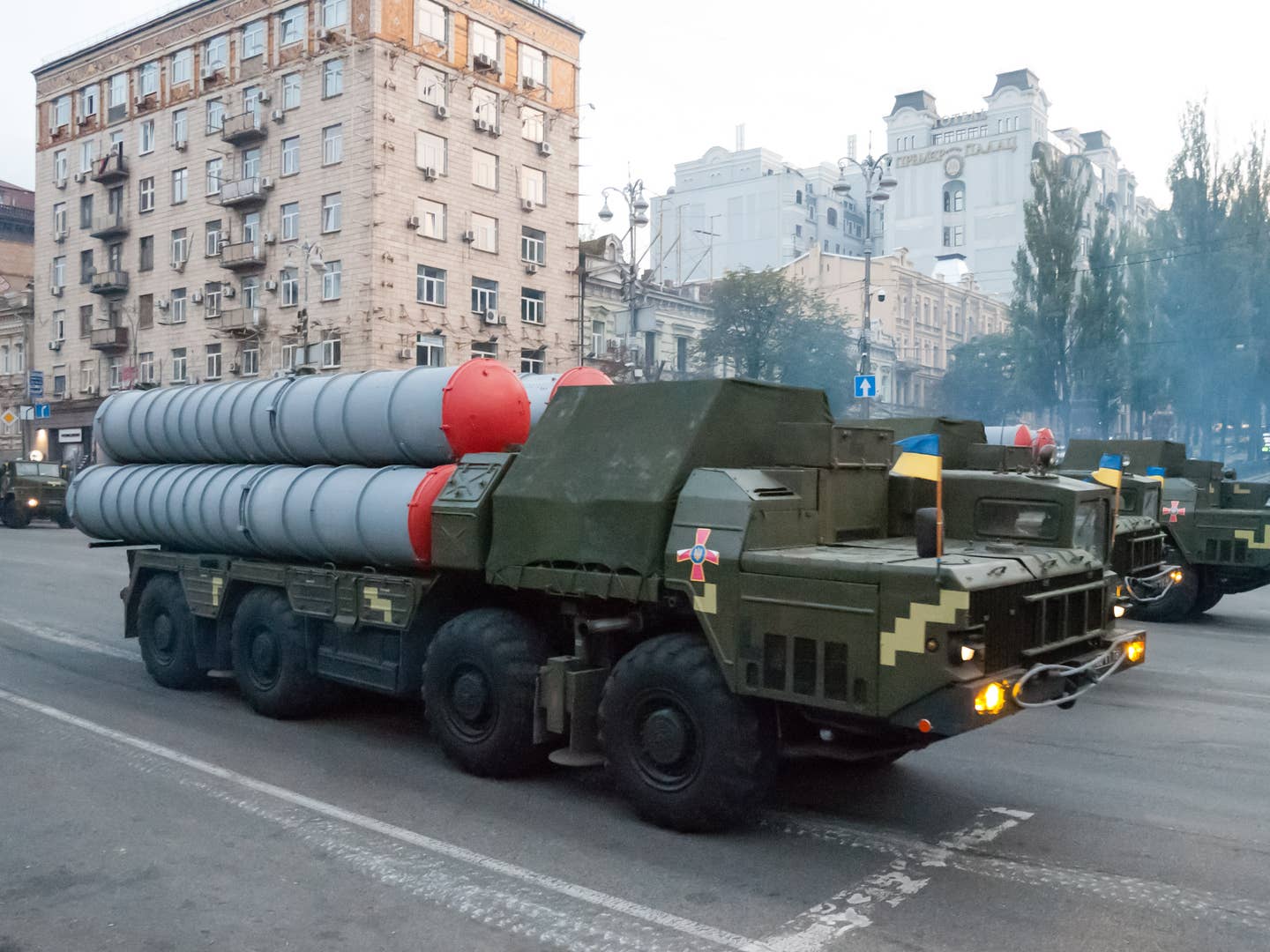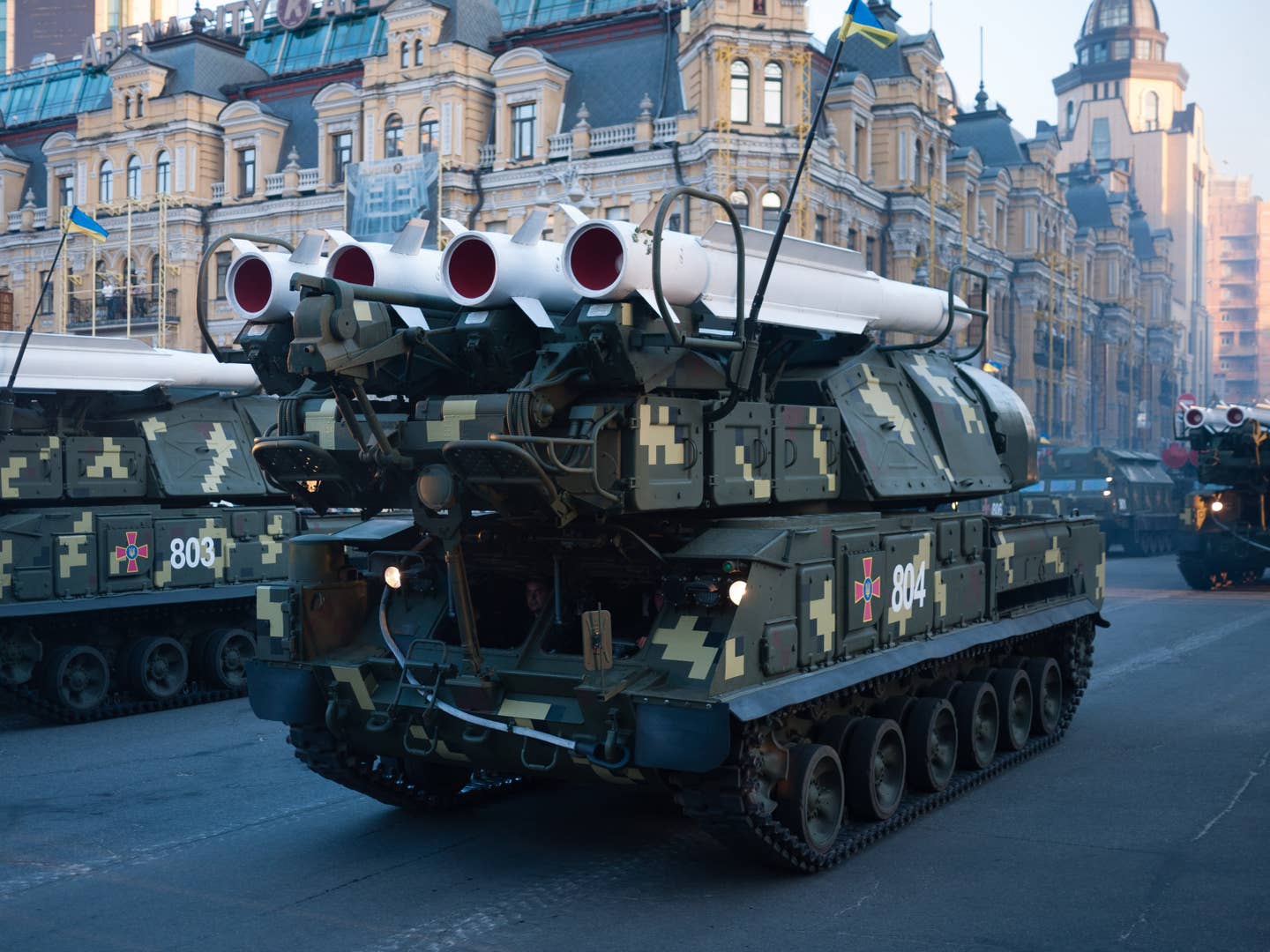A top Russian Army General has lauded the effectiveness of the Igla-S and Verba Man-Portable Air Defense Systems (MANPADS) in the Ukraine Conflict.
China Says J-20 Stealth Fighters Are Now Deployed In All Five Theatre Commands Amid Multiple Front Challenge
South Korea Nears A Whopping $10B In Defense Exports Thanks To Sale Of Howitzers, Fighters & Missile Systems
Russia’s Commander-in-Chief of the Ground Forces, Oleg Salyukov, said in an interview on September 30 that one-third of Ukrainian fighter jets were shot down using Igla-S and Verba MANPADS.
“In the event of suddenly appearing air targets at low and extremely low altitudes, the Igla and Verba MANPADS have proven themselves well, which account for a third of the destroyed manned aircraft of the Armed Forces of Ukraine,” Salyukov told Krasnaya Zvezda, the official newspaper of the Russian Ministry of Defense.
In addition, Salyukov emphasized the role of medium and short-range air defense systems, which he said were essential to cover the Russian ground troops during the ongoing Special Operation in Ukraine.

In particular, the modern S-300V4, Buk-M2 (M3), and Tor-M2 (M2U) anti-aircraft missile systems have shown the greatest effectiveness, according to Salyukov.
The Igla-S and Verba MANPADS are employed against low-flying fixed- and rotary-winged aircraft, unmanned aerial vehicles, and cruise missiles flying at a range of 500 to 6000 meters and an altitude of 10 to 3500 kilometers.
Threat Of MANPADS
By now, it should not be surprising that MANPADS has accounted for most of the Russian shoot-downs of Ukrainian fighter jets. Even the Ukrainian forces have employed MANPADS to a great extent in their air-denial strategy against the Russian fighter jets.
Notably, the soviet-origin Igla-S MANPADS is also used by the Ukrainian military, as was observed in late September when Ukrainian Special Operations Forces (SSO) brought down a Su-34 using an Igla MANPADS.
Video of RUS Su-34 that was shot down by the APU with an 9K38 Igla (Sa-18 Grouse) MANPADS.#UkraineRussiaWar #OSINT#Fellas #NAFO pic.twitter.com/Wug8HjwE85
— OSINT (Uri) (@UKikaski) September 24, 2022
A retired-Russian fighter pilot has admitted the effectiveness of Ukrainian MANPADS in a recent interview with EurAsian Times.
“Most of our Su-35s, Su-24s, and Su-34s have been hit while flying at low altitudes,” a retired Russian pilot told EurAsian Times, who requested anonymity.
Therefore, since the onset of the war in February, thousands of MANPADS of different types from several countries have been supplied to the Ukrainian forces across the country, with more on their way. For example, the US government has committed to providing Ukraine with over 1,400 Stinger anti-aircraft systems.
However, these MANPADS will be rendered useless without the medium-to higher altitude air defense systems needed to create the opportunities to engage the enemy aircraft at lower altitudes.
Importance Of High-Tier Surface-To-Air Missiles
As EurAsian Times reported, the Ukrainian forward-deployed medium and long-range air defenses, like the S-300s and Buk-M1s, are forcing the enemy fighter jets to fly at altitudes below 4500 meters, right into the range of the man-portable air defense systems (MANPADS).

Therefore, Ukraine and Russia need high-tier Surface-to-Air missiles to deny aerial supremacy to each other.
In the words of the Commander of US Air Forces in Europe and Africa, Gen. James Hecker, “They’re (S-300 & Buk-M1) hard to take down. They really are. They’d be hard for us to take down with fifth-generation stealth aircraft and better aviation.”

According to Hecker, Russia failed to make a concentrated effort to take down Ukrainian air defenses at the beginning of the conflict. “That would have been our priority,” Hecker said during the September annual Air Force Association conference.
During the Ukraine Defense Contact Group meeting at Ramstein Air Base in Germany, one of Ukraine’s biggest requests was for additional S-300 and Buk-M1 missiles.
Ukraine’s Dwindling Stockpile Of S-300 Missiles
Ukraine’s inventory of these two SAMs appears to be dwindling, which could present a massive problem for the Ukrainian military.
In March, Ukrainian President Volodymyr Zelensky sought help from the US Congress to acquire more S-300 systems, highlighting its importance and possibly indicating that the Ukrainian military may suffer a grave shortage of SAM batteries.
#Ukraine: The Russian forces claimed to hit a Ukrainian S-300 battery, consisting of what appears to be a 5P85S launcher and 5N63S engagement radar, with a cluster munitions fired from a Smerch MRL- causing a massive explosion. It is unknown when or where precisely this occurred. pic.twitter.com/Vp62VR9OAM
— ?? Ukraine Weapons Tracker (@UAWeapons) May 6, 2022
Ukraine appears to have lost around 24 S-300 launchers and six Buk-M1 launch vehicles more than six months into the war, according to the latest figures compiled by the military tracking blog Oryx based on visual confirmations.
The actual number of losses may be higher; however, the slow and steady loss of Ukraine’s air defense systems, particularly the long-range S-300 systems, could be of great concern for officials in Kyiv.
According to a previous EurAsian Times report, Ukraine is losing S-300 launchers at a rate of at least three or four a week.
Russia Unleashes S-300 SAMs & Iranian UAVs
On the other hand, Russia has a massive stockpile of old soviet-era S-300 SAMs, which it has deployed in Ukraine in large numbers, so much so that the Russian military has been using S-300 missiles for ground attacks.
The Chief Directorate of Intelligence at Ukraine’s Defense Ministry estimates that Russia still has some 7,000 such old missiles left, which could last for another three years if fired at the present rate observed in Ukraine.
According to the Ukrainian armed forces, Russia has so far fired more than 500 such missiles in Ukraine.
The SAMs used for ground attacks present an even bigger challenge for the Ukrainian air defenses because they can be guided and fly zig-zag-like cruise missiles. Also, since the launchers of these missiles are usually very close to targets, there is very little time for the air defense to react to them.
Furthermore, the Russian military recently devised another way to deal with Ukrainian high-tier SAM systems – the Iranian-made drones.
#Ukraine: In the first credible sighting of Iranian drones in use by Russian forces, here we see the remains of a HESA Shahed-136 loitering munition (or a design based on it), which is made in Iran. From the appearance, it seems it likely detonated.
Images via @kms_d4k pic.twitter.com/LUBKrPAMNc
— ?? Ukraine Weapons Tracker (@UAWeapons) September 13, 2022
Iranian-made drones provide Russia with an expendable and cost-effective alternative to its precious and expensive aircraft and cruise and ballistic missiles.
The Russian military could employ drones in areas where its aircraft cannot operate without extreme risk.
Video reportedly of a Iranian Shahed-136 loitering munition over Odesa. https://t.co/LLYyhB8a2I pic.twitter.com/OmrhNe896j
— Rob Lee (@RALee85) September 23, 2022
Also, if used in large numbers, the kamikaze drones like the Iranian-made Shahed-136 can overwhelm Ukraine’s air defenses, particularly its prized SAM stockpile.
Ukraine’s Way Out
The Ukrainian military appears to have found a way around its problem of diminishing SAM stockpiles.
Recent reports from Ukraine suggest the Ukrainian forces are using their Soviet-era 9K33 Osa short-range air defense missiles in combination with the Gepard air defense artillery systems provided by Germany.
#Ukraine: An unorthodox air defense combination in #Kharkiv Oblast: Soviet-era 9A33BM3 TELAR of the 9K33M3 Osa-AKM short range SAM system and a ?? German-supplied Flakpanzer Gepard SPAAG.
These types are extensively used by the attacking Ukrainian forces to provide an AD bubble. pic.twitter.com/NsIYs2MGEW
— ?? Ukraine Weapons Tracker (@UAWeapons) September 26, 2022
The Osa AK is a highly mobile, short-range tactical surface-to-air missile system with engagement radars and electro-optical guidance. It has a range of 14 kilometers and an altitude of about 13 kilometers.

While the Gepard is an all-weather tank equipped with two 35 mm Oerlikon KDA automatic guns, each of which can fire 35-millimeter-diameter at a rate of 550 rounds per minute at a range of 100 to 4000 meters. In addition, it also has two radars that can determine the target at a distance of up to 15 kilometers.
The two weapons systems are reportedly complementing each other. According to David Axe, an American military commentator, the Osa could be used to take the first shot with the Gepard going after any leakers.
- Contact the author at tanmaykadam700@gmail.com
- Follow EurAsian Times on Google News




